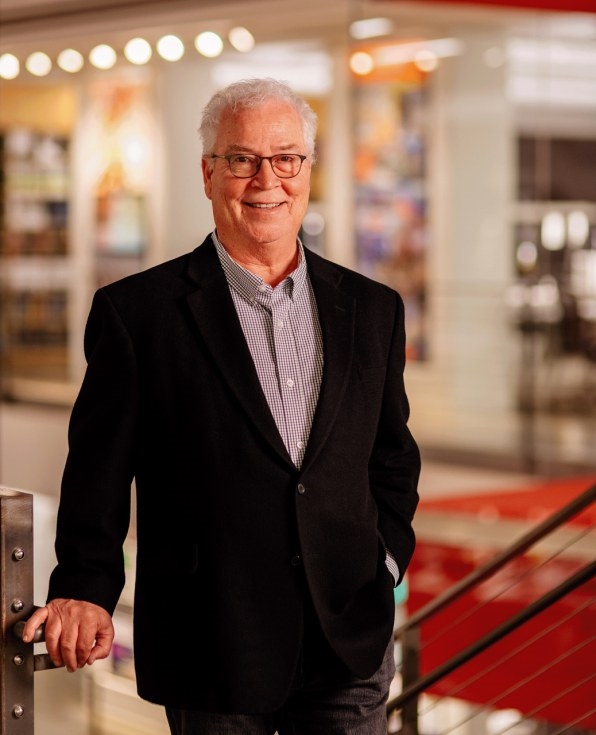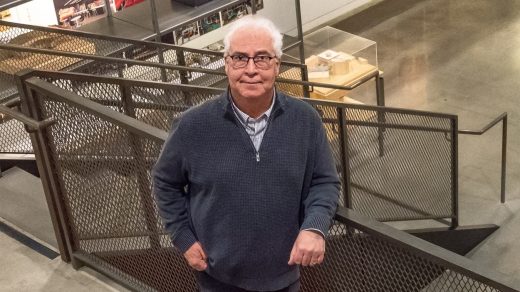The world’s biggest architecture firm just hired Disney’s former head Imagineer
Bob Weis, the former president of Walt Disney Imagineering, is leaving the world of theme parks and imagination to help design the buildings and spaces of everyday, real life. Today, Weis is joining the architecture and design firm Gensler as its global immersive experience design leader.
Gensler, the largest architecture firm in the world, works with more than 4,000 clients globally on projects ranging from skyscrapers to stadiums to office interiors. It tapped Weis to apply his expertise in creating themed environments and immersive experiences to the types of buildings that people use on a regular basis, whether for an entertaining night out or for a day at the office. Gensler has explored these kinds of immersive designs in projects like AT&T’s Dallas headquarters, where a public plaza features interactive art, ambient music, and the piped in sounds of regional birdsong. Hiring Weis is a sign that more sensory experiences are on the way. It’s also a bet that people are coming to expect the physical spaces of their lives to include more storytelling, experience, and unconventional design.
“Now more than ever, as we emerge from the global pandemic, people are craving compelling, authentic, visceral experiences in the places where they live, work, and play,” says Gensler co-CEO Andy Cohen.
“There’s such a hunger for it,” Weis adds.

Weis started at Disney’s Imagineering arm in 1980, working on theme parks including Tokyo Disney, Shanghai Disney, and California Adventure. Most recently, he was president of Disney Imagineering from 2016 to 2021. His tenure has seen the rise of the internet, the never-leave-home entertainment of streaming services, and the cold lockdowns of the pandemic. Through all this, Weis is still a believer in the importance of the kinds of engaging physical experiences offered in places like Disney theme parks. He expects people are ready for more of them closer to home, but still outside its walls.
“It bothers me when someone says something is an immersive experience and it’s on a screen. We all have screens at home,” Weis says. “When you go out to an immersive experience, it should engage all your senses. It should envelope you in the story like you can’t do at home on your computer.”
Creating truly immersive design doesn’t have to take the form of fantasy, as it does in the parks and resorts of Disney. Weis says his move to Gensler reflects a growing desire among people to get out of the house and to share communal experiences with others. It’s also a chance for Weis to work at the relatively fast speed of urban development.
“Theme parks take a lot of development time. There’s a lot of infrastructure and capital that goes into them. They last a long time, they take a long time to deploy,” he says. “[With Gensler] We’re talking about things that want to be very current, that want to be dynamic with the times.”
Gensler and Imagineering have overlapped before, with the two organizations working together closely on the design of Disneyland’s Shanghai resort; Cohen and Weis have known each other for 25 years.
Weis says the move to Gensler will be a chance to expand the scope of the kind of design he was able to do with Disney, making it less of a one-off moment experienced on vacation and more integrated into the stores, workplaces, healthcare facilities, and homes people use every day. “I have such gratitude for the projects I worked on at Disney, but I like the idea of bringing these kinds of experiences back closer to where people live, to the cities they live in, in places they go frequently, and in various areas of their life,” he says.
Gensler has yet to announce any specific projects Weis will be working on, but Cohen says his expertise will find relevance in a wide range of projects, from retail to wellness to workplace to entertainment to sports stadiums and arenas. “Immersive experience design has applications across all our practice areas,” Cohen says.
As an architecture firm venturing into the multi-sensory space of experience design, Gensler is not alone. In 2020, the Seattle-based architecture firm NBBJ acquired experience design studio ESI Design, and New York-based Rockwell Group has long blurred the boundaries of conventional architectural practice with its work on resorts, theater sets, and emerging immersive experiences.
As the world’s biggest architecture and design firm, Gensler’s move is significant, and also a signifier of where the industry is heading. Weis’s move to Gensler is notable, but it’s perhaps not totally unexpected. When he stepped down from his role as president of Imagineering, his replacement, Barbara Bouza, came to the job with a similar outsider experience: She worked at Gensler for nearly 20 years.
(31)



